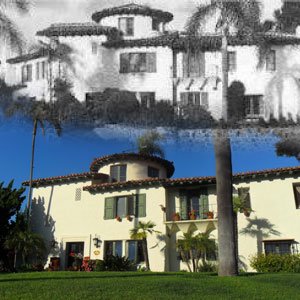
“JEHOVAH’S people have a very rich spiritual heritage.” – so proclaimed a recent Watchtower article, before continuing, “The fascinating record of that heritage can be gleaned not only from publications but also from photographs, letters, personal accounts, and artifacts related to our worship, our preaching work, and our history.” (w12 1/15 pp. 31-32)
Having read such a statement, one could reasonably conclude that ALL aspects of our organization’s history, no matter how embarrassing, would be worthy of our study and consideration.
But there is one artifact in this “spiritual heritage” that has been mostly overlooked in Watchtower’s carefully manicured historical narrative. The artifact is a San Diego residence known as Beth Sarim (or “house of princes”). Within its bricks and mortar, Beth Sarim carries a powerful cautionary tale that the Governing Body, despite professing to be “keenly interested in our theocratic history,” would seemingly prefer to ignore.
A brief pilgrimage

I recently had the opportunity to visit Beth Sarim on a trip to San Diego with my wife. It was a typically sunny day in southern California with an almost cloudless sky. The house was instantly recognizable as our car neared the end of the quiet cul-de-sac where it is situated.
Beth Sarim was sold in the 1940s following Rutherford’s death, and is now privately owned. Having stopped by without an appointment, it felt rude not to ring the doorbell to say hello to the current residents. Sadly, nobody was home. A basketball net stood in the driveway, indicating that a family was now living there.
Noticeable on the sidewalk at the entrance to the driveway was a painting of the property on a sun-baked paving slab. There was also a bronze plaque beside the front door heralding the site as a “historical landmark” for the city of San Diego. It is intriguing that San Diego is more interested in claiming Beth Sarim as a historical landmark than its builders, the Watch Tower Society. Once you research the history of this beautiful building and the circumstances behind its existence, the reasons why it is so overlooked in Watchtower literature become obvious.
Rutherford’s private mansion
The few references to Beth Sarim in the Society’s publications make very little effort to deny that the building was erected first-and-foremost as a private residence for Rutherford. The three-paragraph gray box to which the story of Beth Sarim is confined in the Proclaimers book (p.76) opens by discussing Rutherford’s poor health, and how his winter-time work in San Diego (2,800 miles from Brooklyn headquarters) was “urged” by his doctor. We are left with the idea that the construction of a Californian mansion for Rutherford’s private use was a medical necessity.
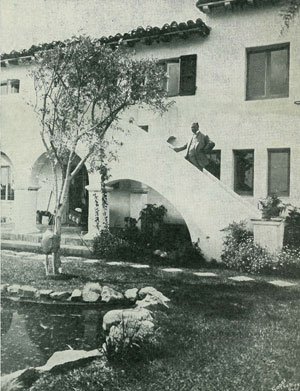
One of the most extensive discussions of Beth Sarim in the Society’s publications is to be found in a 1931 issue of “The Messenger” magazine – published by the Society as a convention report. A downloadable PDF file of the issue in question can be viewed by clicking here. Under the heading “Beth-Sarim – Much Talked About House in San Diego,” pages 6 and 8 defend Rutherford’s need for the property in response to critical newspaper reports.
“Judge Rutherford, president of the Watch Tower Society, is one of the hardest-worked men in the world. Anybody can be a Christian in peace-time, but Judge Rutherford was one of the war-time Christians; and, for daring so to be, went to Atlanta Penitentiary under four sentences of twenty years each.” (The Messenger, July 25 1931, p.6)
In reality, Rutherford was not sent to Atlanta Penitentiary merely for being a Christian, but for allowing the printing of fiercely political rhetoric in pages of the Finished Mystery that criticized America’s involvement in the First World War. He did not serve “four sentences of twenty years each,” but was incarcerated for nine months before his release. The article continues…
“When he emerged he was in poor physical condition, and even now has the use of but one lung. Since his return from Atlanta, prudence and good common sense dictated that, working as hard as he constantly works, he should have the benefit of the most equable winter climate to be found.” (The Messenger, July 25 1931, p.6)
If “prudence and good common sense” were to be applied to a man described as “one of the hardest-worked men in the world,” who also happens to have only “the use of one lung” (or, as the Proclaimers book puts it, “only one good lung”), then surely the solution would have been for Rutherford to do less work, or relinquish his position entirely. Instead, living in luxury accommodation on the opposite side of the continent was evidently the most obvious solution – as the article continues to reason…
“It is a matter of common knowledge among meteorologists (weather experts) that San Diego, California, is as near perfection for a weather climate as it is possible to get. About a quarter of a million people besides meteorologists have made the same discovery and make the city their winter home.” (The Messenger, July 25 1931, p.6)
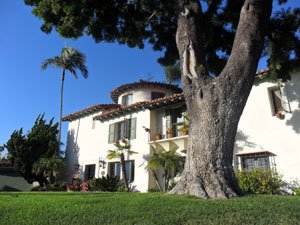
While few would deny that San Diego enjoys a wonderful climate, the insinuation put forward above is curious to say the least – namely, that the number of people living in a city confirms how agreeable the climate is, or that a person lives in a city with the climate as the sole deciding factor.
“For years after he emerged from prison, Judge Rutherford went to San Diego to work during the winter months, renting such quarters as could be secured. His physician, Dr. A. G. Eckols, of San Diego, urged him to make the city his permanent winter home; and in the latter part of the year 1929 some brethren, out of their own personal funds, arranged for the erection of Beth-Sarim, ‘the house of the princes,’ of which several illustrations appear in this issue.” (The Messenger, July 25 1931, p.6)
The advice of the physician, Dr Eckols, is greatly accredited in explaining Rutherford’s move to San Diego. As the Proclaimers book puts it, “In the 1920’s, under a doctor’s treatment, he went to San Diego, California, and the doctor urged him to spend as much time as possible there.” The reader is therefore left with the impression that Rutherford departed Brooklyn bound for San Diego with his “doctor’s orders” still ringing in his ears to head to warmer climes for the sake of his health. In actual fact, Dr Eckols was based in San Diego, and Rutherford had been using rented accommodation in the area for years before the decision was made to build Beth Sarim.
The funding of Beth Sarim is one of the murkier aspects of this story – and the most difficult to get a full picture of. Watchtower literature repeatedly evades the suggestion that Beth Sarim was built directly out of Society funds. “Beth Sarim was built with funds that were a direct contribution for that purpose,” asserts the Proclaimers book. “No money has been drawn from the funds of the Watch Tower Bible & Tract Society, or any affiliated association… for the purpose of erecting, purchasing or acquiring the possession of any building or real estate in San Diego, California,” insisted the Society Treasurer (W. E. Van Amburgh) at the time.
Irrespective of how the builders were paid, the facts are that a luxury residence was built for the exclusive use of the President of the Watch Tower Society using contributed money, to be held in trust by the Society (according to the deeds). Moreover, the deeds stipulated that Beth Sarim would belong to the Watch Tower Society on Rutherford’s death, and it was the Society who pocketed the proceeds from its eventual sale. Beth Sarim was therefore as much a Watchtower property as any other. Donated funds were used for the personal gain of one man, albeit quite likely under false pretenses.
Rutherford’s life of luxury
The real question is – why did Rutherford need such an extravagant home? Bear in mind, Beth Sarim was built in 1929 – the same year as the Wall Street crash that drove America into the Great Depression. The construction costs were around $25,000 – not that much by today’s standards, but an eye-watering amount of money back then. Rutherford is said to have declined an offer of $75,000 for the finished building, described by a neighbor as “one of the finest in Kensington Heights.” Very pleasant accommodation could have been easily purchased for as little as $5,000 in those years.
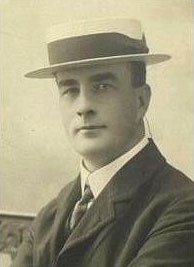
As you may expect, Rutherford’s opulent living standards did not go unnoticed by his contemporaries. In his famous letter of complaint to Rutherford dated July 21st 1939, Olin Moyle remarked (under the heading “Discrimination”)…
“We publish to the world that all in the Lord’s organization are treated alike, and receive the same as far as this world’s goods are concerned. You know that is not the case. The facts cannot be denied. Take for instance the difference between the accommodations furnished to you, and your personal attendants, compared with those furnished to some of your brethren. You have many many homes, to wit, Bethel, Staten Island, California, etc. I am informed that even at the Kingdom Farm one house is kept for your sole use during the short periods you spend there. And what do the brethren at the farm receive? Small rooms, unheated thru the bitter cold winter weather. They live in their trunks like campers. That may be all right if necessary, but there are many houses on the farm standing idle or used for other purposes, which could be used to give some comfort to those who work so long and so hard.
You work in a nice air conditioned room. You and your attendants spend a portion of the week in the quiet of country surroundings. The boys at the factory diligently work thru the hot summer months without such helps, or any effort made to give them. That is discrimination which should receive your thoughtful consideration.”
In his excellent blog, Marvin Shilmer has unearthed a rare photo of the basic living conditions at Brooklyn Bethel circa 1928 – the year before Beth Sarim was built. Marvin compares this image with a photo taken at Beth Sarim from the 1931 Messenger article, showing Rutherford seated beside the fireplace in a very spacious and luxuriously furnished bedroom. The vast difference in accommodation is obvious, and supports the assertions made by Moyle above.
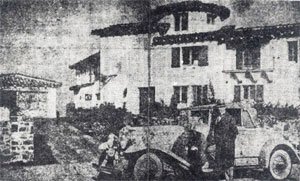
Rutherford’s taste for luxury didn’t end with his living arrangements. He is also known to have had the exclusive use of two 16-cylinder Cadillacs – one based at Brooklyn Bethel, the other (a yellow coupé) kept in the garage at Beth Sarim. “To place the value of this automobile in perspective,” observes the 1988 book Witnesses of Jehovah regarding the Cadillac, “a new Ford in 1931 cost approximately 600 dollars. A 16-cylinder Cadillac cost between 5400 and 9200 dollars, depending on style.”
The Ancient Worthies
Rutherford clearly had no qualms about demanding the very best in life at the expense of those who followed him. Even so, it seems he may have felt compelled to offer at least some explanation for the needless extravagance of having Beth Sarim all to himself at a time of such austerity. He thus insisted that it should be set aside for use by the “ancient worthies” (or “Princes”) – men of faith from the Hebrew Scriptures who Rutherford expected to be resurrected to earthly life just before Armageddon. The 1931 Messenger article elaborated as follows…
“Before Judge Rutherford would accept and use the home, he insisted upon writing the deed that it shall forever be held in trust by the Watch Tower Bible and Tract Society for the use of the Lord’s work in the earth, with the expectation that in due time Abraham, Melchisedec, Joseph, Moses, Joshua, David, Isaiah or some others of the patriarchs or prophets of olden times will appear and will be glad to use this home which has been prepared for one or more of them in the western edge of the new world.” (The Messenger, July 25 1931, pp.6 and 8)
It seems too ludicrous to believe, but Rutherford was so taken with the idea of the so-called “ancient worthies” making their comeback in San Diego that he drafted and signed arguably the most ridiculous title deed ever written, in which characters from the Bible were named as future owners of the property. Rutherford was so proud of the deed that he allowed it to be published in the March 19 1930 issue of the Golden Age, a copy of which is downloadable on this link (see pages 22 and 23 of the PDF file).
Needless to say, the bizarre claims of Rutherford that he was living in a house that would soon belong to the likes of Moses and King David drew the attention of local journalists. When questioned on what he expected these ancient worthies to look like when they appeared, Rutherford replied, “As perfect men. I interpret that to mean… that David, Gideon, Barak, Samson, Jepthae, Joseph and Samuel will be sent here to wrench the world from Satan’s grasp, clothed in modern garb as we are, and able, with little effort to speak our tongue.”

And so the President of the Watch Tower Society was able to look a journalist in the eyes and tell him that Bible characters would emerge from nowhere in sunny San Diego, speaking perfect English and wearing frock coats, high hats and spats. (click here to read where this account is mentioned) It is little wonder that a derisory newspaper article ensued, prompting such a staunch defense in the 1931 Messenger.
The small gray box on Beth Sarim on page 76 of the Proclaimers book relegates the story of the ancient worthies (or “princes”) to a mere footnote, seemingly out of sheer embarrassment. But to Rutherford, his wild claims regarding Beth Sarim were a source of great pride – an “act of faith.”
“The climate [in San Diego] is the same as that of Palestine. The place is planted with date and palm trees, such as would be familiar and pleasing sights to these men. On the part of Judge Rutherford, the dedication of this home to God’s work and for the use of these men was a simple act of faith.” (The Messenger, July 25 1931, p.8)
“The house has served as a testimony to many persons throughout the earth, and while the unbelievers have mocked concerning it and spoken contemptuously of it, yet it stands there as a testimony to Jehovah’s name…” (Salvation, 1939, p.311)
The notion that any belief, no matter how preposterous, is acceptable so long as it demonstrates faith and is propounded in Jehovah’s name is eerily reminiscent of current Watchtower reasoning.
A controversial burial
It is my personal opinion that Rutherford’s beliefs stemmed predominantly from delusion and inflated self-worth. He convinced himself so thoroughly of Beth Sarim’s significance as a future meet-up point for Biblical resurrectees that he insisted on being buried there, “facing the rising sun, in an isolated part of the ground which would be administered by the princes, who should return from their graves.” (Consolation 1942 May 27)

Rutherford’s bizarre funereal wishes led to a protracted legal battle following his death. Hayden Covington and Nathan Knorr were among those who fought to have his remains buried at Beth Sarim (or the adjoining Beth Shan) in defiance of the local residents, who weren’t too keen on the idea of their neighborhood being turned into a cemetery and site of religious pilgrimage. The residents finally won. As a parting shot, the May 27 1942 issue of the Consolation condemned the San Diego city officials for having “followed the course of Satan.”
It therefore took three and a half months for Rutherford’s remains to be reluctantly buried in an unmarked grave on Staten Island, New York – although rumours persist that his wishes were honoured regardless of the legal defeat. Stories that the driveway at Beth Sarim was re-surfaced shortly after Rutherford’s death have fueled speculation, but so far there is no physical evidence to confirm the precise location of his final resting place.
A cautionary tale ignored
Beth Sarim still stands today as a monument to the folly of unfounded expectation and privileged seclusion. (Proverbs 18:1) The greatest sadness in all of this story is that Rutherford’s modern-day successors, the Governing Body, refuse to fully acknowledge this important chapter in Watchtower’s history and learn from it. Instead, they repeat the exact same errors that Rutherford made – isolating themselves from reality in their plush offices and conference rooms, and allowing fanciful interpretations of scripture to dictate the lives of millions.
In particular, the Governing Body has recently changed their “understanding” of Christ’s words at Matthew 24:45. They now insist that they alone are the foretold “faithful and discreet slave” – spiritual stewards of God’s organization. Ironically, part of their explanation for this new teaching involves their insistence that Jesus Christ personally “cleansed” and selected Rutherford and his associates between 1914 and 1919. It goes without saying that Rutherford’s questionable ideas and personality would make a mockery of this notion for any who dare to delve into the history books.
In a recent video promoting the 2013 convention, Society spokesperson J.R. Brown quipped, “We say God’s word is truth. With humans, I think we all know that it isn’t always truth, or they have to revise it or change it later on.” These words perfectly sum up not only Rutherford’s bizarre notions, but the fleeting nature of all Watchtower dogma – so-called “new light.” With the lessons of Beth Sarim going unheeded, future generations will no doubt find just as much amusement and astonishment in the Society’s current literature and teachings as we may now find in Rutherford’s ancient worthies, and his ivory tower in San Diego.
Further reading…
- Marvin Shilmer’s blog post on 1920s Watchtower living conditions
- Wikipedia article on Beth-Sarim
- JWfacts article on Beth-Sarim
- Download of 1931 Messenger PDF
- Beth Sarim material in the book Jehovah’s Witnesses: Their Claims, Doctrinal Changes and Prophetic Speculation
Related videos…


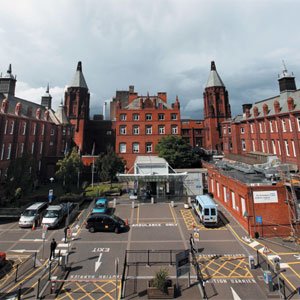
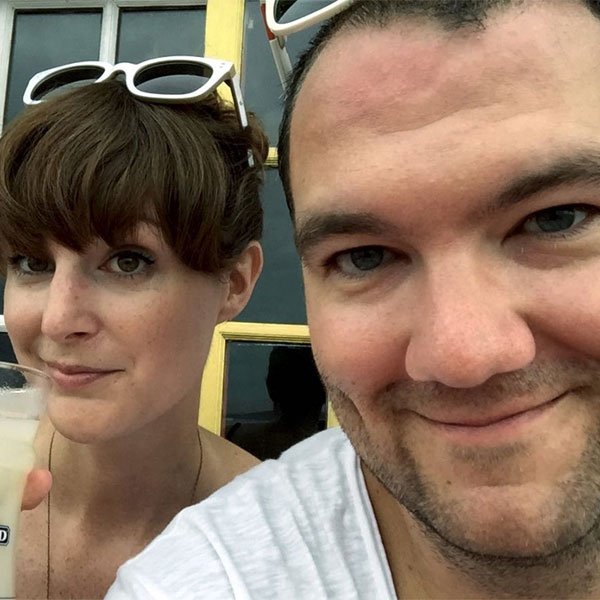

When I was a young teenager in the 1950s, my family attended a JW convention at the downtown baseball park then occupied by the minor league San Diego Padres. We had no idea that Beth Sarim even existed, but someone in our party suggested that we take a drive Sunday afternoon after the final session and go by the “house where Judge Rutherford used to live.” We didn’t have Google or Yahoo maps in those days, so my father tried to follow another car that had a sister in it who claimed to have actually worked in that house. By the time we finally found the right neighborhood and located the house, it was pretty dark and not enough light to take photos. As our two cars stopped in front of the house, a man came out the front door and started yelling at us to get out of the neighborhood. My father did not take well to being yelled at, so he stepped out of the car and confronted the man. After exchanging a few words, my father got back in the car and we left. As we drove back to our home in Riverside, Dad told us that the man calmed down enough to say that for the past four days (District Conventions were typically 4 or 5 days in the 1950s and 60s) “you damn people have been coming by my house, knocking on my door, walking all over my flower beds, and trespassing into my back yard – taking pictures, snatching flowers, crushing my bermuda grass. Get on out of here and don’t come back!” Dad was convinced the man meant business and decided he did not want to have to punch it out with the homeowner.
I’m not sure about the current owners, but I understand that at one time the neighbors considered petitioning the City of San Diego to make the last few hundred yards of that street “private” and subject to restricted access. While I think it is kind of cool to be living in a somewhat famous house, I can only imagine what the residents still have to put up with every time there is a major JW convention in the city.
Wow, what a great story Juan! Having read your experience, I’m kind of glad nobody was home when I visited! The current residents are probably still haunted by the constant flow of pilgrims.
When I was growing up, I confronted Mama about Beth Sarim. She did not deny it, but said that it was evidence that Armageddon was very near. That was in the early fifties. Now, it is clear evidence that the Watchtower Society does not want to be held accountable for its failed prophecies, bad decisions and harmful-to-people policies.
Cedars: As always, great research! A lot of the friends do not know about the second property (Beth Shan) that was built 10 years later. Any future plans to research this well hidden secret?
Thanks quietsportt! In the end, I decided to just briefly reference Beth Shan in my discussion of Rutherford’s burial so that people can research it if they choose to. I would recommend Paul Grundy’s excellent article, in which he discusses the unanswered rumours that Beth Shan had its own bomb shelter… http://www.jwfacts.com/watchtower/bethsarim.php
Where have we seen any of this before?
People need to research as well Rutherford’s thuggery and the “Goon Squad” that he kept near him…
This was by no means a Man of Peace or who demonstrated The “Fruits of the Spirit”…
I must strongly disagree that the Watchtower failed to learn any lessons from Beth Sarim on the point that it learned the importance of leveraging contributions (donations) and earning a high yield on real estate investments. Look at the Brooklyn properties which were acquired through literature and Hall donations, it will reap a huge landfall when it eventually is sold.
Also, look at the recent grab of Kingdom Hall titles–Halls built by funds donated by publishers. Fortunately, some elder bodies would rather torch their property than surrender it.
…when the man got out of his chariot to talk with you, right there, I was in spirit.–2 Kings 5:26-27
“Also, look at the recent grab of Kingdom Hall titles–Halls built by funds donated by publishers. Fortunately, some elder bodies would rather torch their property than surrender it.”
Haaah! I love it!
But doesn’t it say a lot about the state of affairs?
I hadn’t even heard about this so thank you JBob, for telling us!
I keep saying “Desperation!”
Merci Cédars pour ce très bon article. En 1959, j’ai commencé à faire le porte à porte. Une gentille dame (russeliste) venait toujours voir maman et m’avait dit exactement ces choses concernant Rutherford. J’avais pensé que c’était méchant. Depuis plusieurs années, je sais que c’est réel. Le livre “Proclamateurs…” des années 1990 est de la pure propagande.
in Our Readers Ask . . . Is Religious Faith an Emotional Crutch? (w12 11/1 p. 23) The Governing body’s answer starts with these words ” An emotional crutch is a form of self-deception that causes a person to ignore reality and prevents him from reasoning logically.” With this article, we can conclude that JWs’s Faith is an “Emotional Crutch”! Elsewhere in the Watchtower study of 15 June 2012 p.18 par 16 you can read “many people believe that religion contributes to or causes conflict. An increasingly vocal and militant group of Western intellectuals is calling for the end of religion’s influence on society.” WHO CAN NOW DENY THIS AS WE READ THIS ARTICLE??
I find it amazing that the claim that Beth Sarim was intended for the use of the “ancient worthies” was not seen for the patent nonsense that it clearly was. It had been the belief all along that the “ancient worthies” would be resurrected some time before Armageddon and would form a righteous government for the soon to be established Jewish state of Israel. they would live and rule in Jerusalem – not San Diego – and they would be so obviously blessed by god that all other governments in the world would ask them to take on their affairs also. This was how the earthly phase of the Kingdom of God was to begin.
Maybe Rutherford expected he would be the supremo over the “ancient worthies.”
Imagine a situation that Moses, David and Samson resurrected somewhere in Israel. Afterward Rutherford puts them in San Diego and said to them: “Here you can not miss anything, you have a beer if you’re thirsty, when you are bored with the Cadilac ride around the city, do not worry I have another Cadillac.’s Just one little thing I’m now with the power of God, and you must listen to me.
Great recap on the past. I was familiar with the story and always found it to be odd. My parents kept away from that topic by referring it to where Rutherford lived in his later years. Many members seem to easily dismiss it today as just a misunderstanding of the light in those days. The light is much brighter today and the society is always understanding their mistakes of the past. Wow. Try to get the society to admit this is not likely to happen. The fact is the rich history of JW’s or Russellites in those days may reveal many layers of deceit and lies manifested to confuse members regularly. The fact is seen when compared with other evidence that Masonic Lodge Order symbols and beliefs are present in many of the texts published during those times. When I left this organization I discovered many hints of Luciferian belief still alive and well within this organization. I studied the occult for some time and find parallels between light bearers, light getting brighter and the founding Masonic symbolism as a continuing belief structure focused on the celebration of Lucifer. I have my own beliefs about abuse of children, satanic rituals found in the literature such as Enochian magic numbers found in the Watchtower and Awake over the years. For many this seems extreme but do not take my word and do your own research. I was hoping that Cedars could do an article on some of the occult symbols found in the literature over the years. I am a very busy person but would greatly appreciate your input on the matter. Thanks Cedar Great Work on revealing the TRUTH!!
Damn you Cedars for knocking on my door. I was like not another witness tourist as i hid behind the door
1 John 4:verse one…says.. “Beloved ones, do not believe every inspired expression, but test the inspired expressions to see whether they originate with God, because many false prophets have gone forth into the world.”
Hi Cedars,
I’m glad you were able to visit Beth Sarim. I have been to San Diego several times but have not visited the site. My dad was from the Rutherford era and told me as a young child about Beth Sarim and the “ancient worthies” as he said… “We were told to go to the convention where the ‘ancient worthies / princes’ would return, they didn’t so they made some up!”
Despite being able to see some of the flaws of the faith, my dad never gave up on the idea that it was “the truth.” After twenty years of being disfellowshipped he was reinstated after I started to apply a strict shunning stance towards him. He died in 1991 at age 76. I wonder what he would think if he were alive today? One of the last arguments I had with him before he died was my suggestion ‘the end’ could delay as long as 2014, since people lived to be 100. He thought such a suggestioned completely ridiculous.
Cheers,
-Randy
Randy:
I would love to hear more of your story. . . .Do you still feel the same way, and what would you have done differently looking back?
Hi Quietsportt,
My story is online. If you go to exjehovahswitnessforum.yuku.com and search for “Who the heck is Rawe?” (in quotes) you’ll find it. I have also been in contact with Richard Kelly of AAWA who is interested in post my story on their site. The quick answer to your question is I felt justified at the time and I am glad my dad was able to spend the last 4 years of his life back in the faith he so loved. But, no, now I feel shunning amounts to unwarranted and unwanted third party influence in our relationships.
Cheers,
-Randy
Thank you Randy! I look forward to reading it.
Willows, and 2 Samuel 12 verse twelve … says “Whereas you [David] yourself acted in secret, I [Jehovah], for my part, shall do this thing [raping David’s wives] in front of all Israel and in front of the sun.’”
I think the Judge was mentally ill, and had visions of grandeur, I see nothing humble about him, never did like him even before I found out about all this, there was always eerie about him, he gave me the creeps, as do some of the GB today.
Hi Cedars,
Great post, as usual!
I had some fun with the whole Beth-Sarim/Ancient Worthies thing in my tongue-in-cheek book: “Layers of Truth,” which is available online (for free) at http://smmcroberts.net/religion/fundamentalism/watchtower/lotindex.html
The Wiki info on both Russell and Rutherford is very powerful and very different from what we were taught from inside the organization!
It gives us a different history of the organization…
Rutherford:
http://en.wikipedia.org/wiki/Joseph_Franklin_Rutherford
Russell:
http://en.wikipedia.org/wiki/Charles_Taze_Russell
Would the current owners object to having their driveway examined with ground-penetrating radar? If the rumours are true and Rutherford’s bones are still there, I imagine they would like to know that there is a corpse on their property.
I wonder how the Governing Body of today would react if it turned out that Rutherford was, indeed, illegally buried at Beth Sarim.